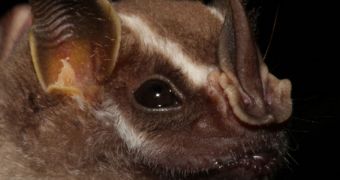A new study conducted on fruit-eating bats has for the first time revealed the existence and nature of distinctive patterns of olfactory receptors in the mammal brain. This is one of the first investigations to provide new data connecting certain olfactory receptors to the odors they bind in the brain.
Such studies are critically important for our understanding of how the human brain codes for, and processes, the sense of smell. Figuring out the complex interactions that occur while we process odors has thus far proven to be extremely difficult, though geneticists have made some headway.
For example, scientists now know that around 1,000 genes are involved in coding for the olfactory receptors located inside our noses. Furthermore, studies have shown that this “superfamily” of genes accounts for around 3 to 6 percent of the entire genetic material in all mammal species.
What researchers are really interested in finding out is what odors bind to each receptor, and how the brain interprets these connections as representing a particular smell. Learning more about the different evolutionary challenges that led to the development of this ability is also an area of intense research.
By identifying a distinctive olfactory receptor gene pattern in fruit-eating bats, Stony Brook University evolutionary biologist Liliana Davalos and University College Dublin evolutionary biologist Emma Teeling have taken an important step in linking at least some olfactory receptors to particular odors.
This research highlights another important aspect in this line of inquiry, which is that studying genome functions and evolutionary history across species can have direct repercussions on our understanding of complex human processes that would otherwise provide difficult to tackle directly.
The new investigation was sponsored by the Division of Environmental Biology (DEB) at the US National Science Foundation (NSF), the Science Foundation Ireland (SFI), and the Irish Research Council (IRC). Details of the work appear in this month's issue of the journal Molecular Biology and Evolution.
“This study provides new insights into the mechanisms that have allowed bats to diversify their diets so extensively,” comments NSF DEB program Director Simon Malcomber. Fruit-eating bats were selected for this study over the blood-thirsty cousins because the two diverged evolutionarily about one million years after the dinosaurs went extinct.
“We knew that animals that live in various ecological environments--whales, bats, cows--have evolved different suites of olfactory receptors. That suggests that the ability to smell different odors is important for survival,” Davalos explains.
“Bats offer a prime opportunity to answer this question. They've evolved new sensory systems such as echolocation, and various bat species eat very different foods, including insects, nectar, fruit, frogs, lizards and even blood,” the team leader concludes.

 14 DAY TRIAL //
14 DAY TRIAL //